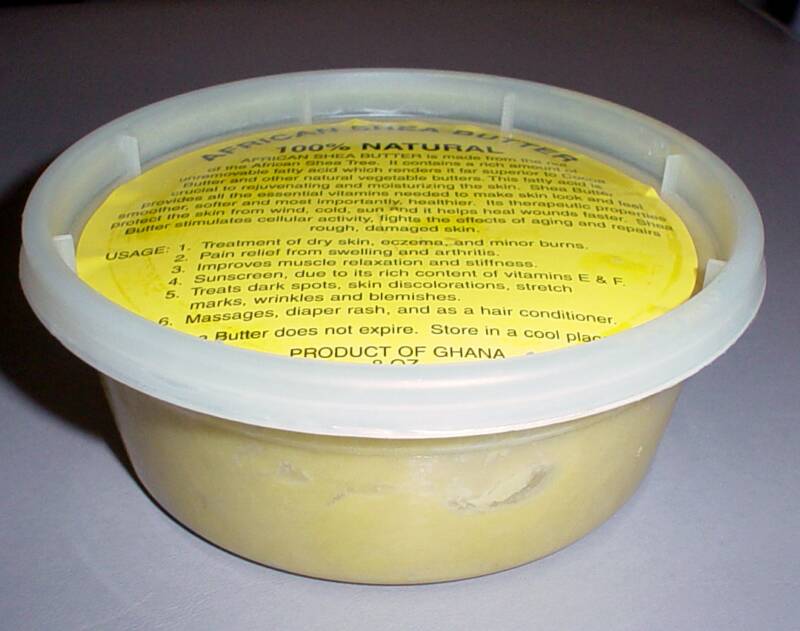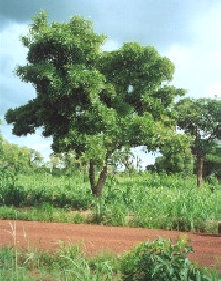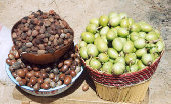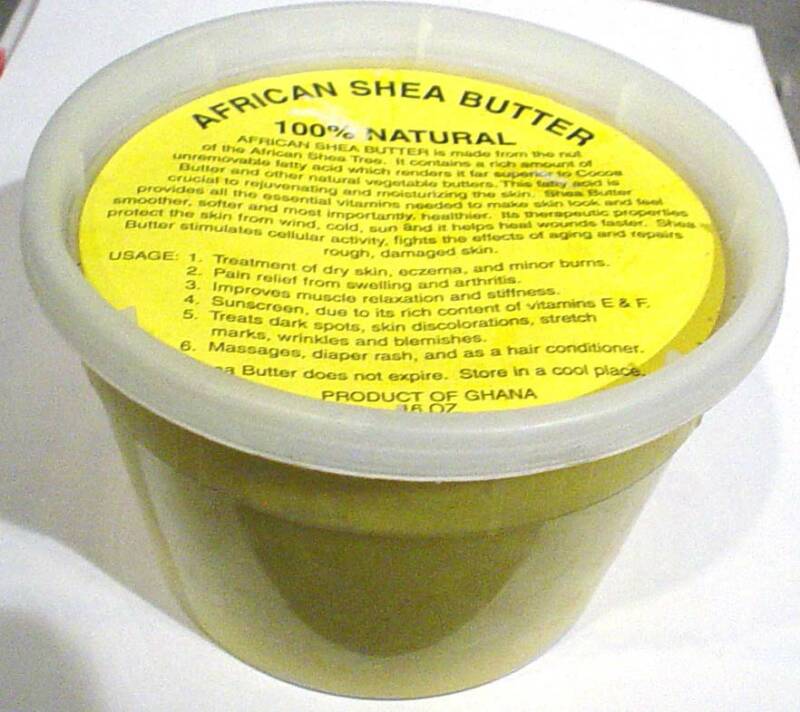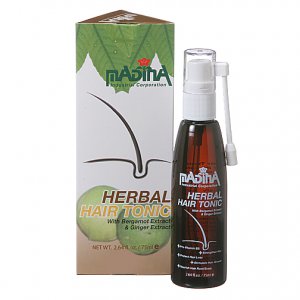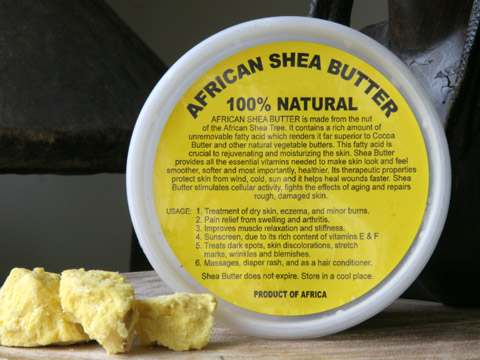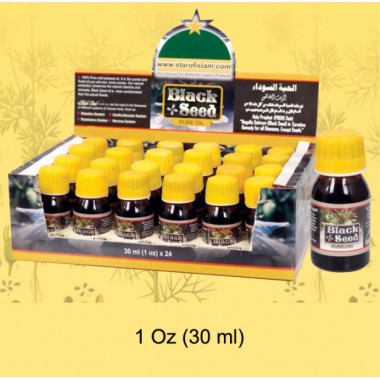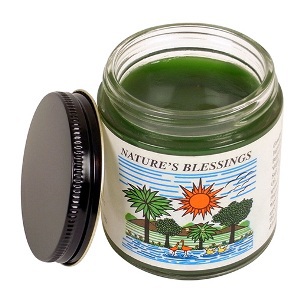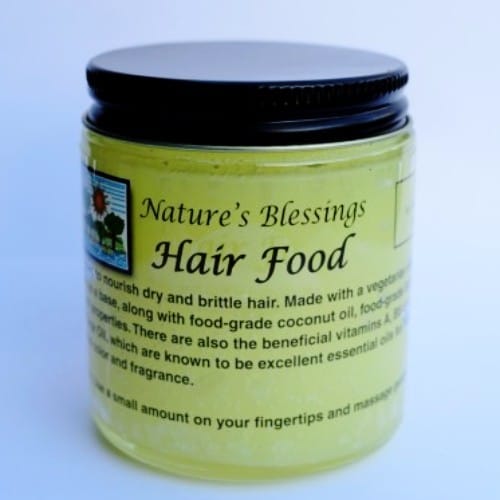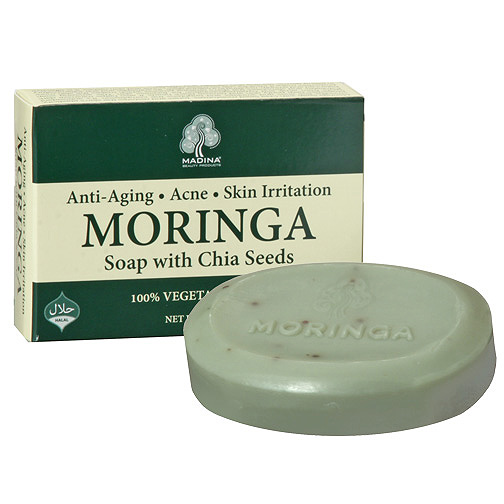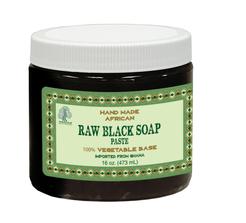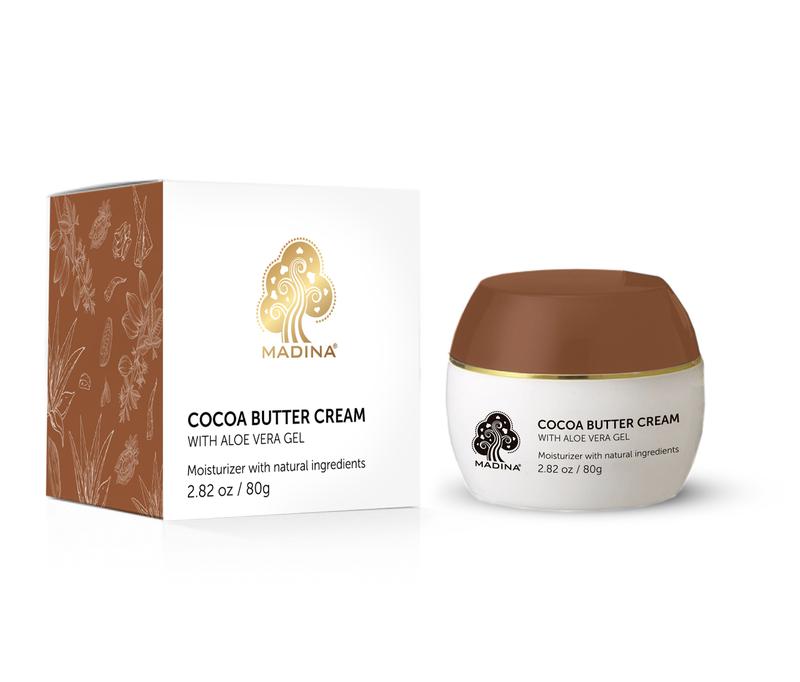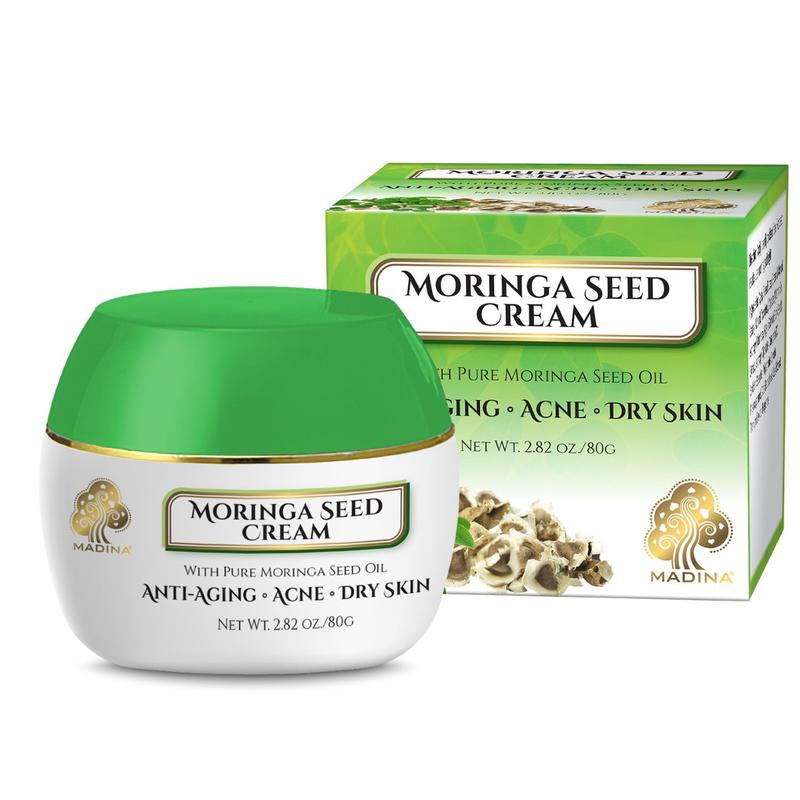AFRICAN SHEA BUTTER IS MADE FROM THE NUT OF THE AFRICAN SHEA TREE. IT CONTAINS A RICH AMOUNT OF UNREMOVABLE FATTY ACID WHICH RENDERS IT FAR SUPERIOR TO COCOA BUTTER AND OTHER NATURAL VEGETABLE BUTTERS. THIS FATTY ACID IS CRUCIAL TO REJUVENATING AND MOISTURIZING THE SKIN. SHEA BUTTER PROVIDES ALL THE ESSENTIAL VITAMINS NEEDED TO MAKE SKIN LOOK AND FEEL SMOOTHER, SOFTER AND MOST IMPORTANTLY, HEALTHIER. ITS THERAPEUTIC PROPERTIES PROTECT THE SKIN FROM WIND, COLD, SUN AND IT HELPS HEAL WOUNDS FASTER. SHEA BUTTER STIMULATES CELLULAR ACTIVITY, FIGHTS THE EFFECTS OF AGING AND REPAIRS ROUGH, DAMAGED SKIN.
USAGE: 1.) Treatment of dry skin, eczema, and minor burns.
2.) Pain relief from swelling and arthritis.
3.) Improves muscle relaxation and stiffness.
4.) Sunscreen, due to its rich content of vitamins E & F.
5.) Treats dark spots, skin discolorations, stretch marks,
wrinkles and blemishes.
6.) Massages, diaper rash, and as a hair conditioner.
SHEA BUTTER DOES NOT EXPIRE. STORE IN A COOL PLACE.
PRODUCT OF GHANA
8OZ.
COST: $15.00 EACH
Shea Butter will provide improvement in all the conditions listed below. As you use this multi-purpose butter, you are likely to discover additional uses. The amount of time required for optimum results with various conditions may vary with each condition. Wrinkles, for example, require 4 to 6 weeks of daily use. Itching is relieved immediately.
Dry skin
Skin rash
Skin peeling, after tanning
Blemishes and Wrinkles
Itching skin
Sunburn
Shaving cream for a smooth silky shave
Small skin wounds
Skin cracks
Tough or rough skin (Feet, Elbow)
Cold weather
Frost bites
Stretch mark prevention during pregnancy
Insect bites
Healthy skin
Muscle fatigue aches and tension
For before and after strenuous exercise
Skin allergies such as poison ivy or poison oak
Eczema
Dermatitis
Skin damage from heat, hot grease while cooking, radiation treatment for certain medical problems...
DOUBLE THE SIZE FOR LESS!!! NOW AVAILABLE IN
16 oz.
COST: $25.00
*** SHIPPING & HANDLING WILL BE ADDED TO EACH ITEM! ***
ATTENTION: WE NO LONGER SHIP ORDERS OUTSIDE OF THE UNITED STATES OF AMERICA!!! Thank you! add text.
100% NATURAL SHEA BUTTER
(SCROLL TO THE BOTTEM FOR NEW ITEMS!)
MADINA HERBAL HAIR TONIC!
COST: $10.00 EA.
AFRICAN HANDMADE SOAP - MADINA LIQUID- RAW BLACK SOAP 16OZ
COST: $18.00 - FREE S/H
While you may have only recently heard of Shea Butter, its use is far from a recent development. The benefits of Shea Butter have been well known for centuries. Africans have used Shea Butter for many generations to protect and rejuvenate their hair and skin. Shea Butter is not only for those of African descent though. Everyone can take advantage of Shea Butter's benefits. Today, Shea Butter is available in pure form and as an ingredient in many products to help with maintenance of the hair and skin and relief from many common ailments.
What is Shea Butter?
Shea Butter is only found in the tropics of Africa. It is extracted from the nuts of the Shea-Karite tree which begins to bear fruit after about 15 years; and can take up to 30 years to bear a quality crop of nuts with a high content of irremovable fatty acid. It is this irremovable fatty acid that gives Shea Butter its unique healing properties and makes it far superior to cocoa butter and other vegetable butters. Traditionally, Shea Butter was extracted by people who picked the nuts, cracked them, grilled them and pounded them. They were boiled in water for hours until the Shea Butter rose to the surface. It was then scooped into gourds and left to cool and set. Shea Butter is solid at room temperature although it quickly liquefies right around body temperature. This Shea Butter is called unrefined Shea Butter or raw Shea Butter. Since Shea Butter is an all natural product, it can vary widely in quality, appearance and smell depending on where it is produced from and how it is refined or extracted.
Most Shea Butter comes from West Africa. Although a more soft and smoother variety from East Africa is beginning to appear on the market.
How can I tell if something is good Shea Butter?
Pure Shea Butter can be found in three types of extractions. Also, recently, Shea Butter has begun to be graded.
Raw or unrefined- extracted using water. The color ranges from like cream (similar to whipped butter) to grayish yellow. This is the original form of Shea Butter. Refined- is more highly processed. Has many of its natural components still intact. Highly refined or processed- solvents are used to increase the yield (hexane is an example). The color is pure white.
How should Shea Butter smell?
Shea Butter has a natural smell, which is not unpleasant to most people. The smell of raw or lightly refined West African Shea varies from nutty to similar to Crisco® or shortening. Over time the smell of the Shea Butter will diminish. If an unrefined Shea Butter has almost no smell, it is probably getting old. Shea Butter should not stink, not matter how old it is. It is possible for Shea Butter to go rancid. If it does, do not use it. If you do not like the smell of natural, raw Shea Butter, you can purchase more highly refined Shea Butter that has been de-odorized and filtered through clay. However, we do not recommend ever buying Shea Butter that has been refined using hexane or other solvents.
How do I store Shea Butter?
Shea Butter does not need to be refrigerated. However, over a period of two or three years, the Shea Butter will begin to lose some of its effectiveness. As the natural ingredients begin to break down, some of the healing benefits will be reduced, but the Shea Butter will continue to be an effective moisturizer. Store Shea Butter is a cool (not necessarily cold) place. If you're going to use it within a couple of years, you should have no problems.
My Shea Butter melted
One of the great things about Shea Butter is its low melting point. When you apply it to your skin, it literally liquefies. However, one of the bad things about Shea Butter is its low melting point. It's quite possible it will melt in a hot room. It may even be melted when it's delivered to you in the summer months. If this happens, don't worry. The Shea Butter is good. Just take the lid off of the container and set it in the refrigerator until it gets hard again. As it begins to cool, you might want to give it a stir to bring the olein (liquid parts) back into contact with the stearin (solid parts) so that the Shea Butter is uniform throughout.
What color should my Shea Butter be?
The color of unrefined Shea Butter depends on the Shea nuts used. Shea nuts will vary in color from almost white to yellow. Therefore, refined Shea Butter will vary in color. You will not be able to determine the authenticity or quality of Shea Butter based strictly on its color. There is even a naturally golden yellow colored Shea Butter. Shea Butter should never be extremely hard or greasy though. Most Shea Butter is a creamy color. Shea Butter that is pure white is highly refined and may or may not have its healing properties intact depending on how it was refined.
How can Shea Butter benefit me? Shea Butter can provide relief from everything from just dry skin to many minor dermatological diseases (if you have a serious skin condition, you should see a doctor). It has been clinically shown to provide benefits. Here are some of the benefits of Shea Butter for the skin:
Daily skin moisturizer (face and body)
Dry skin relief
Dry scalp
Skin rash- including diaper rash
Skin peeling, after tanning
Blemishes and wrinkles
Itching skin due to dryness
Sunburn
Shaving cream to reduce razor irritation
Small skin wounds
Skin cracks
Soften tough skin on feet (especially heels)
Stretch mark prevention during pregnancy
Minor burns
Eczema
Sun and wind protection
Even skin tone
Reduce blemishes and scarring
Eliminating scalp irritation from dryness or chemical processing
Preventing bumps after shaving
Reducing acne (especially in combination with African Black Soap)
Absorbs quickly without leaving a greasy residue
Helps restore elasticity to skin
Restores luster to hair
How does Shea Butter benefit my skin?
Shea Butter nourishes the skin with Vitamins A, E and F. Vitamins A and E help maintain the skin and keep it clear and healthy. They are particularly helpful for sun damaged skin. They help prevent premature wrinkles and facial lines. Vitamin F acts as a skin protector and rejuvenator. It soothes rough, dry or chapped skin and helps soften dry or damaged hair. Shea Butter is high in unsaponifiables (a type of fat). Shea Butter has between 7-12% unsaponifiables. For comparison, avocado oil, a well known skin conditioner, has between 2-6%. This high level of unsaponifiables is one of the properties that makes Shea Butter so invaluable in treating the conditions listed above. Also, Shea Butter easily penetrates the skin allowing the skin to breathe and not clogging pores. Shea Butter has a high level of cinnamic acid, a natural sun screen. So, it provides some degree of protection from the sun. Shea Butter is also anti-inflammatory making it useful in treating rheumatism.
While we make no medical claims about our Shea Butter, we do have anecdotal evidence that it is very useful in treating minor skin conditions. We have had several customers who have used Shea Butter for eczema and/or psoriasis and told us it works as well as steroids at a fraction of the cost and without the side effects. We have a customer with an allergy to the sun. When she began using our Shea Butter lotion (not even pure Shea Butter), she accidentally discovered that it prevented the rash she normally would get from even a small amount of exposure to the sun.
How does Shea Butter benefit my hair?
Shea Butter provides moisture to dry or damaged hair from the roots to the very tips, repairing and protecting against weather damage, dryness and brittleness. It also absorbs quickly and completely into the scalp to rehydrate without clogging pores. It is particularly beneficial for processed and heat-treated hair. It is an excellent treatment for dry scalp. It restores luster to damaged hair.
Is all Shea Butter the same?
All Shea Butter is not the same. Shea Butter loses some of its healing properties as it sits on the shelf, so very old Shea Butter is not as beneficial. Refining techniques will vary. Highly processed Shea Butter will not be as effective. Sometimes Shea Butter is mixed with other ingredients that reduce its benefits. Then, there are those products that add very little Shea Butter but prominently display "Shea Butter" on the label. While Shea Butter is not very expensive, you should be aware of products that claim to provide the benefits of Shea Butter and sell for very low prices. Many manufacturers are taking advantage of the Shea Butter buzz by adding a little Shea Butter to a very inexpensive product implying you can get the benefits of Shea Butter in their product.
Treasured Locks takes care to source our Shea Butter only from reputable sources to ensure freshness, quality and the refining technique to ensure there are no contaminants and that the "good stuff" is left in.
What can I tell by looking at the label?
Ingredients on the label should be listed in the order from the ingredient that is the most to the least. Therefore, you should look for Shea Butter products that list Shea Butter early on the list of ingredients. You should know the ingredients before you buy any Shea Butter product and should buy from a reputable source. The more Shea Butter in a product, the greater the likelihood, you will receive the full benefits of Shea Butter.
Where can I get good Shea Butter?
You can get quality Shea Butter products right here. We carry a wide variety of products from pure Shea Butter to Shea Butter lotions, soaps and lip balm. Just click on the Shea Butter Products button on the left to see our full selection. All of the Shea Butter we carry is of the highest quality. We are very selective about where we obtain our Shea Butter and the extraction methods used. We will not accept any Shea Butter that has been extracted using solvents. This is the highest quality by an independent laboratory. You can find cheaper Shea Butter and Shea Butter products. But, you will not find better ones. Our Shea Butter products use copious amounts of Shea Butter. Some of the major manufacturers are jumping on the Shea Butter bandwagon now by adding small amounts of Shea Butter to their products. Don't be fooled by this. Our pure West African Shea Butters are of the highest grade.
What's the difference between raw Shea butter, refined Shea butter and highly refined Shea Butter?
The differences between raw, refined and highly refined Shea Butter lie in how the Shea Butter is extracted from the nut and how it is processed after that. Manual extraction processes leave more of the raw ingredients in the Shea Butter. After it is extracted, it can be further refined removing color and impurities that some people don't like. This further refining can also remove some of the smell. You can think of the difference between raw Shea Butter and refined Shea Butter as being similar to the difference between wheat bread and white bread. Truly raw Shea Butter can even be unfiltered. That is one end of the spectrum. On the other end, there is Shea Butter that is extracted using chemicals that is pure white, has no smell and has lost a lot of its healing properties in the process.
All of our Shea Butter is mechanically extracted. No chemicals (other than water) are used in the process. Our raw Shea Butter is lightly filtered. But, retains its natural color and smell. Our Ultra Pure Shea Butter is refined. It is further processed by being put through clay filters and the odor is vacuumed out. It retains its healing properties and moisturizing ability.
Do I want raw Shea Butter or Refined Shea Butter?
This is really a matter of preference. I prefer raw Shea Butter. Unless you do not like the smell of Shea Butter, we recommend you go with raw. The more the Shea Butter is processed, the higher the chance some of the "good stuff" is going to be removed. Certainly, none of the healing or moisturizing properties of Shea Butter are enhanced by the further processing to make it white and odorless. If you do not like the smell of Shea Butter, try to get refined Shea Butter that is refined without the use of solvents. Or, you could try the East African Shea Butter, which has a much milder aroma than West African Shea Butter.
What about East African Shea Butter?
There is some confusion as to which shea butter is better, West African (Vitellaria Paradoxa) or East African (Vitellaria Nilotica). East African Shea Butter is different from that of the West African varieties in that it is higher in olein (the liquid part of the Shea Butter). Because of this, East African Shea Butter is softer and more fragrant than West African Shea Butter. The product is highly valued and gives Ugandan women farmers over five times the amount received by their West African counterparts. East African or Ugandan Shea Butter has a higher absorption rate due to lower saturated fatty acids. East African Shea Butter has less vitamin A and less sterols. For a natural vitamin A cream or to use for prevention of stretch marks, you might want to use West African Shea Butter. However, if you are looking for natural, intense moisturize, East African Shea Butter is the way to go.
East African or Ugandan Shea Butter is more rare than West African Shea Butter and is extremely difficult to find. When you do find it, it is selling up to the equivalent of $40 per two ounce jar on some websites.
Ugandan Shea Butter is excellent for dry knees, elbows, rough hands and dry scalp. It is especially helpful for dry scalp, dermatitis eczema, sunburn and as a lip balm.
ADDITIONAL & VERY HELPFUL INFORMATION:
BLACK SEED CREAM
For Lighter & Firmer Skin
With Herbal Extract
COST: $10.00 + $3.50 S/H
2.82OZ
NEW ITEMS!
***PLEASE NOTE: UNLESS THERE IS A DEFECT IN ANY PRODUCT...
THERE IS NO REFUND & NO RETURN!!
ALL ITEMS ARE INSPECTED BEFORE SHIPPED!
THANK YOU FOR YOUR CONTINUED BUSINESS!***
100% BLACK SEED OILS
NT. WT 2 OZ
COST: $10.00
($4.50 S/H Added!)
ABOUT BLACK SEED OIL!!
Black Seed also known as Nigella Sativa. The black seed is cultivated in Russia, Turkey, Egypt, Arabia, Oman, Ethiopia, Middle East, Far East, India, Bangladesh, France, Germany and the Mediterranean Basin. It also grows wild in Egypt, Syria, Asiatic Turkey and other parts of the world. Black Seed is known commonly in Arabic as Habbat-ul-Baraka (blessed seed) and in English as Love in the Mist. It is also known as 'CURE OF ALL DISEASES EXCEPT DEATH'. Black seed contains numerous esters of structurally unusual unsaturated fatty acids and the chemical composition is very rich and diverse. It contains eight essential amino acids, carbohydrates, fatty acids, dietary fiber, as well as minerals such as calcium, iron, sodium and potassium. Black seed oil has been used by people in Asia, Africa, the Middle and Far East to promote health and fight disease. It has been traditionally used to treat a variety of ailments and conditions related to respiratory health, stomach and intestinal complaints, kidney and liver function, circulatory and immune system support and to improve health in general. Black Seed has been proven as an anti-biotic, anti-tumor, anti-inflammatory, anti-histaminic, anti-bacterial, anti-bronchial and immune boosting agent. Madina Black Seed oil is 100% pure and cold pressed.
NEW 8oz CONTAINER
- SHEA BUTTER Cost: $15.00 EA
KITI KITI
(Means Cure)
SCALP & SKIN TREATMENT
COST: $15.00 ea
NEW 24 oz SIZE CONTAINER PACKED WITH SHEA BUTTER!!!!
COST: $40.00
NEW SUPER SIZE STURDY CONTAINER!!
32 OZ PACKED WITH RAW AFRICAN SHEA BUTTER!!!
COST: $65.00
**FREE S/H**
NATURE BLESSING
Hair Pomade
4oz
COST: $8.00 ea + S/H
BLACK SEED OIL
Pure and Cold Press
1.0 Oz ( One Bottle )
COST: $5.00
(Additional $4.50 S/H Added!)
NATURE BLESSING
Hair Food
4oz
COST: $8.00 ea + S/H
ALOE BUTTER
16 OZ
100% Pure with coconut oil
SKIN CARE
Ideal for all skin types
COST: $30.00
($8.00 Shipping & Handling))
ACTIVATED CHARCOAL SOAP
COST: $7.00 EA
(PLUS $3.50 SHIPPING & HANDING)
MORINGA SOAP
WITH CHIA SEEDS
COST: $7.00 EA
(PLUS $3.50 SHIPPING & HANDLING)
WILD GINGER & LIME SOAP
++SPICE BARS++
COST: $8.50 EA
(PLUS $3.50 SHIPPING & HANDLING)
ARGAN & MONGONGO SOAP
COST: $7.00 EA
(PLUS 3.50 SHIPPING & HANDLING)
MORINGA OIL - 100% PURE COLD PRESSED - 2 FL. OZ.
COST: 18.00 ea. FREE S/H
MORINGA OIL - 100% PURE COLD PRESSED - 16 FL. OZ. (1 LB)
COST: $110.00 ea. FREE S/H
WEST AFRICAN RAW BLACK SOAP -
100% VEGETABLE BASE - 1/2 LBS
COST: $15.00 - FREE S/H
MORINGA BLACK SOAP - INFUSED WITH PURE MORINGA OIL - 16 OZ (1 LBS)
COST: $24.00 - FREE S/H
MADINA BAMBOO LOTION - MADINA BEAUTY PRODUCTS - 8.45 FL OZ
COST: $10.00 ea. + S/H
HAND MADE AFRICAN
RAW BLACK SOAP PASTE - 16oz
100% VEGETABLE BASE
COST: $18.00 - FREE S/H
COCOA BUTTER CREAM
With ALOE VERA GEL
Moisturizer with natural ingredients
2.82 oz / 80g
COST: $10.00 + $3.50 S/H
MORINGA FACE CREAM
With Pure MORINGASEED OIL
ANTI-AGING *ACNE * DRY SKIN
2.82 oz / 80g
COST: $10.00 + $3.50 S/H
SCROLL DOWN FOR
MORE PRODUCTS!!
